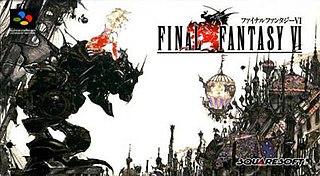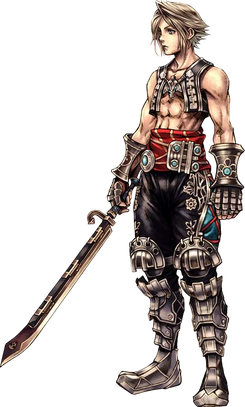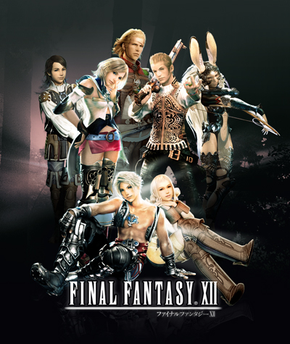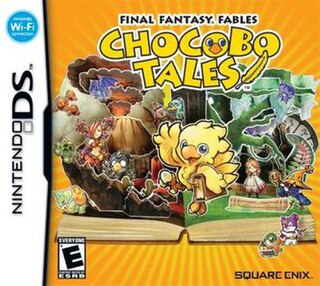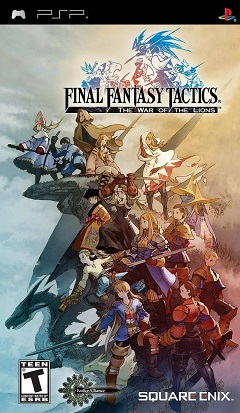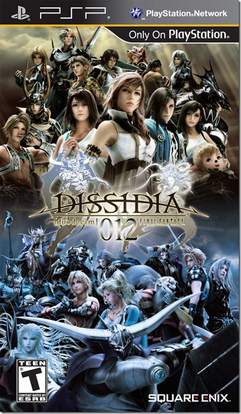Story
Revenant Wings begins a year after the events of Final Fantasy XII, with Vaan flying his own airship with Penelo after Balthier and Fran "stole" the Strahl. The foursome is revisited in Bervenia and decide to accompany each other inside to obtain the Cache of Glabados. [12]
While obtaining a treasure, two strange crystals, the building begins to collapse on itself. In the ensuing chaos, Vaan loses his airship and are forced to flee the site on Balthier's airship. Balthier soon drops Vaan and Penelo back in Rabanastre where they, along with Kytes and Filo, witness a strange object flying overhead: a derelict airship. After sneaking aboard the airship and defeating the Bangaa headhunter Ba'Gamnan, Vaan and company christen the airship whatever the player decides (default Galbana) and find themselves on the purvama Lemurés by accident. While looking around the unknown ruins, they meet Llyud of the Aegyl race and learn his people are locked in battle with sky pirates who are raiding the island for treasure. Lemurés is said to possess summoning crystals called Auracite. Deciding to aid the Aegyl in defending Lemurés, Vaan's group learns the pirates were recruited by the mysterious Judge of Wings, who seeks out the three Auraliths, grand masses of Auracite that protect Lemurés from the outside world.
When the group confronts the Judge of Wings at the site of the first auralith, the Judge of Wings destroys the auralith, leading Vaan and his friends to have visions of Balthier confronting the Judge of Wings and losing, after which they hear sky pirates are gathering at the Skysea, and they go there to find Rikken, a friend of Vaan's. He says he may know something about the Judge of Wings, but to get answers, Vaan must compete in Rikken's tournament.
After saving Rikken, it is revealed that Rikken knows nothing about the Judge, but Tomaj discovers there is an auracite shrine beneath the Skysea. When venturing there, the group encounters Ba'Gamnan who kidnaps Filo, taking her deeper within the shrine. When the group catches up with him, Rikken agrees to help rescue Filo, and once she is rescued, the party moves on to confront the esper Belias, the Gigas, that was summoned by the Judge of Wings. Once defeated, the Judge summons the massive esper Bahamut, who destroys the Skysea, and the party becomes island-trapped.
While stranded, the group meets Velis, a man who was at Nalbina and got lost while searching for his lover, Mydia. After a lot of character development, it is discovered Velis is, in fact, dead, and actually an esper that the group must battle when the Judge of Wings comes and controls him. After Velis is defeated (as the esper Odin), it is discovered the Judge of Wings is Mydia, but she then flees the island. Tomaj runs to the group, tells them the airship is fixed, and that he has spotted the Strahl, Balthier's ship.
When the group finds the ship, they find Fran, who says Balthier is within a mountain on the island they are now on. Once inside, the group discovers an auralith, and the group plus Fran must defeat Mydia and the esper Mateus while protecting Balthier. Once defeated, Mydia flees without destroying the auralith, but Balthier then turns on the group and destroys the auralith, which sends the party into an illusion.
While within the illusion, the team discovers the Aegyl are so emotionless because they are deprived of anima, which is harvested by their god, Feolthanos, and stored in the auraliths. This illusion is the world of the espers, and they find Velis, who makes everything clear: Mydia is a body, stripped of its anima, controlled by Feolthanos to reap anima for him, and if the auraliths are destroyed, the Aegyl's anima will return and as such, they must destroy the auraliths.
Once awoken from the illusion, Vaan confronts Balthier, who already knew these newly discovered facts, and Balthier and Fran join the team. The group then finds the Leviathan, the ship of Queen Ashe and Judge Magister Basch, who join the team as they venture through Ivalice, Emperor Larsa also joining. Mydia, as it turns out, is a Feol Viera, more commonly known as an Exiled, of which have white skin and shorter ears and hair as compared to the normal Viera who are darker-skinned and longer-haired. While in Roda Volcano, the team battles Mydia and the esper Chaos, and, as Mydia takes her dying breath, requests the team go to Feolthanos' palace above Lemurés and kill him. Her anima guides them up as they prepare to open the final chapter of their story.
Above Lemurés, the team battles reincarnations of dead Aegyl, and then battle the reincarnated form of Mydia's anima, while discovering Feolthanos, the god, is, himself, the last auralith. When the team ventures all the way to the seat of Feolthanos' power, they battle him and the anima-stripped Aegyl he commands. When he is almost defeated, he summons Bahamut to do battle with the team. After his giant shrine is destroyed, there is a one-on-one battle between Vaan and Feolthanos in which Feolthanos is apparently stronger, but as Vaan begins to lose, his friends come to back him up: first Ashe and Basch, Balthier and Fran, then Filo and Kytes, Llyud, and finally Penelo---the only battle in the game where every group leader is involved. In the end, Llyud deals the final blow to Feolthanos, releasing all the remaining stored anima.
After the end of the battle with Feolthanos, the game ends, and the characters are shown going their separate ways as the credits roll. If 100% game completion is reached there is an extended ending which shows Vaan and Penelo leaving together as a couple on a new adventure only to be interrupted by Filo, Kytes and Tomaj with some Yarhi and Cuit Sith in tow.



